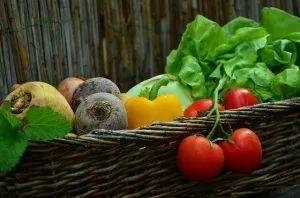Grow Your Own Organic Food in a Forest Garden
Create a food forest to grow your own natural food
Do you ever think about growing your own food? Supermarket prices for organic foods are high compared to other foods so wouldn't it be great if you had your own supply?
If you have never heard of a food forest before then the article below is an interesting insight into this managed ecosystem.
At the end of the article, there is a video showing how a couple have created a Food Forest in their own yard.

Food forests or Forest gardening have been around for a long time with many of the native cultures practicing this form of sustainable agriculture.
It is a form of low-maintenance plant-based food production which replicates natural ecosystems, incorporating fruit and nut trees, shrubs, herbs, running vines and perennial vegetables. Beneficial plants and companion planting are a big part of the food forest system.
Unlike much of the modern industrial agricultural system which relies heavily on inputs such as fossil fuels and artificial herbicides, pesticides and fertilizers, a food forest once established is self-regulating and highly abundant in yield.
Why Food Forests?
- Forests are home to approximately 50-90% of all the world’s terrestrial (land-living) biodiversity — including the pollinators and wild relatives of many agricultural crops (Source: WWF Living Planet Report 2010)
- Tropical forests alone are estimated to contain between 10-50 million species – over 50% of species on the planet.
- Rainforests cover 2% of the Earth’s surface and 6% of its land mass, yet they are home to over half of the world’s plant and animal species.
It is evident that forests themselves are synonymous with life, biodiversity and fertility. Where life gathers, complex and mutually beneficial relationships are created between organisms; natural harmonious communities form and life forms multiply and proliferate.
If forests are where most of the life on the planet is, then anything less than a forest is most likely less suited to supporting life. Life supports life, yet we have forgotten that we are in fact part of the web of life itself, and depend on other life to sustain ours.
Unfortunately, society has been conditioned to clear the land and create unsustainable fields which need high inputs to be maintained.
Food forests are abundant and can yield significantly more than the conventional farming and mono-cropping that dominates much of the industrial landscape today. As well as being high-yielding food forests are high in biodiversity and life.
Food forests can be developed and grown in most climate zones and because they involve vertical stacking are great for suburban and urban areas.
Check out this clip to see how a couple has transformed a traditional suburban landscape into a highly productive forest garden.
For a more indepth story then visit the Collective-evolution website
